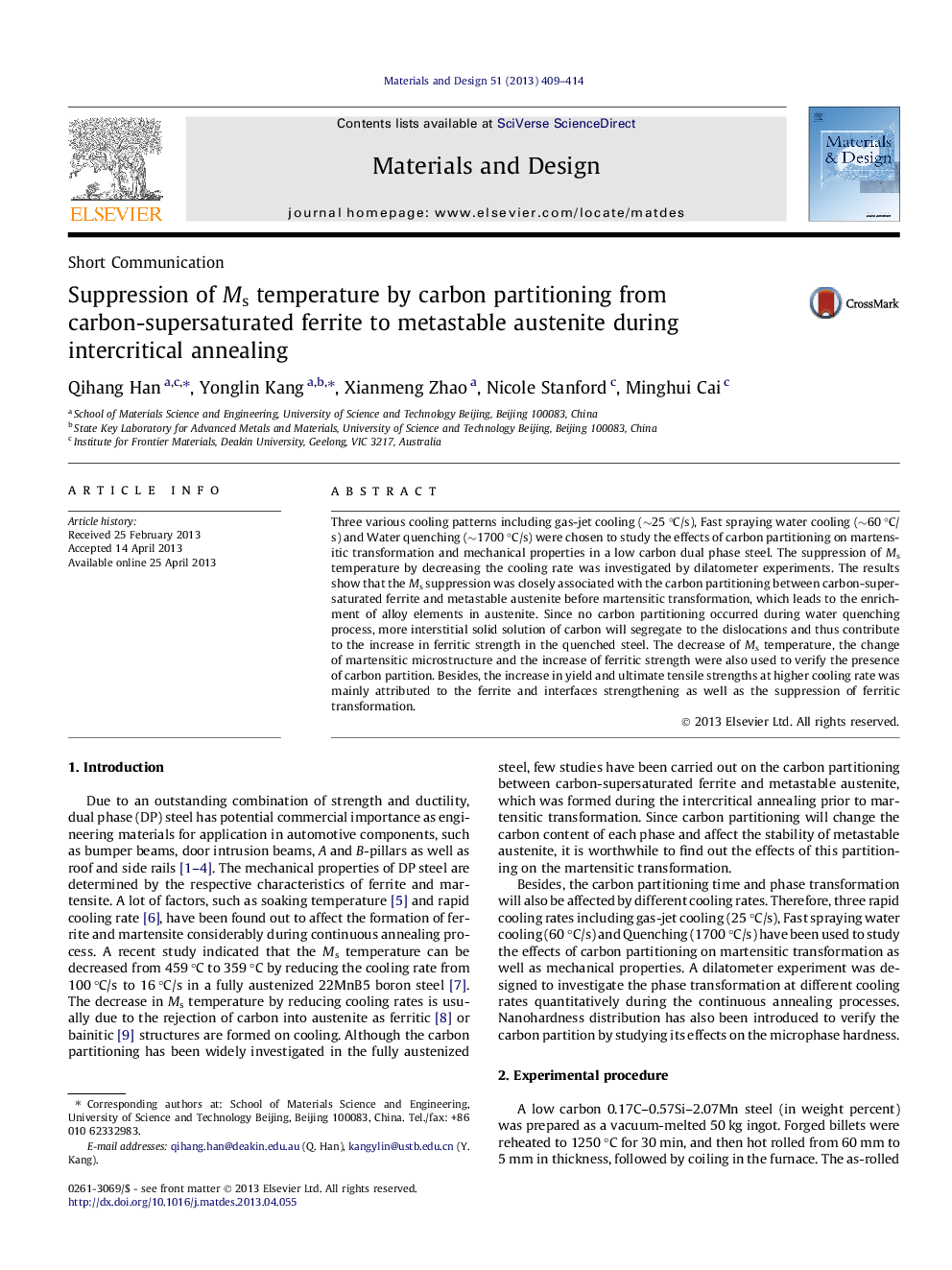| Article ID | Journal | Published Year | Pages | File Type |
|---|---|---|---|---|
| 829855 | Materials & Design (1980-2015) | 2013 | 6 Pages |
•DP980/1180 were produced by gas-jet cooling and Quenching, respectively.•The martensite formation of G-steel happened below tempering temperature.•The martensite formation of Q-steel occurred above tempering temperature.•The carbon partitioning caused by carbon-supersaturated ferrite decreased Ms.
Three various cooling patterns including gas-jet cooling (∼25 °C/s), Fast spraying water cooling (∼60 °C/s) and Water quenching (∼1700 °C/s) were chosen to study the effects of carbon partitioning on martensitic transformation and mechanical properties in a low carbon dual phase steel. The suppression of Ms temperature by decreasing the cooling rate was investigated by dilatometer experiments. The results show that the Ms suppression was closely associated with the carbon partitioning between carbon-supersaturated ferrite and metastable austenite before martensitic transformation, which leads to the enrichment of alloy elements in austenite. Since no carbon partitioning occurred during water quenching process, more interstitial solid solution of carbon will segregate to the dislocations and thus contribute to the increase in ferritic strength in the quenched steel. The decrease of Ms temperature, the change of martensitic microstructure and the increase of ferritic strength were also used to verify the presence of carbon partition. Besides, the increase in yield and ultimate tensile strengths at higher cooling rate was mainly attributed to the ferrite and interfaces strengthening as well as the suppression of ferritic transformation.
Graphical abstractFigure optionsDownload full-size imageDownload as PowerPoint slide
